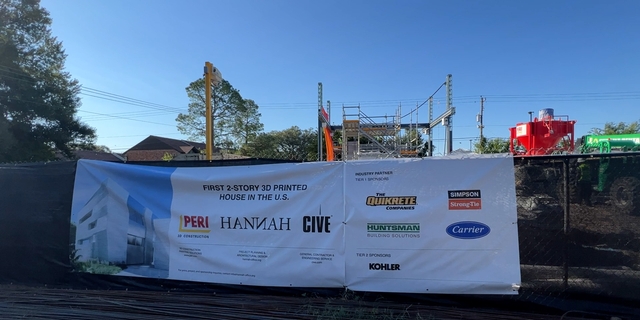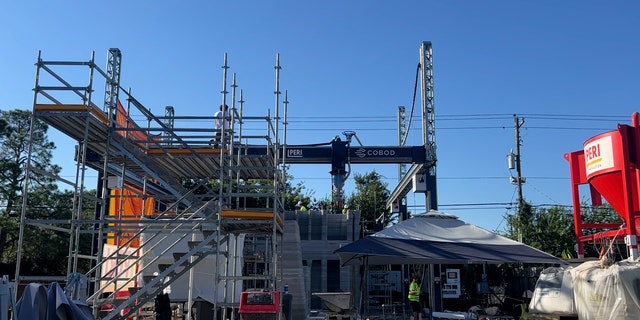Houston welcomes the country’s first multi-story 3D printed home
Houston, TX – Houston welcomes the first 3D printed, multi-level home in the U.S. It will go to one lucky buyer, but the builders say it’s part of ongoing research to streamline and automate construction.
The builders and researchers on the project said if the construction goes well, it could open the door for 3D printed multi-family communities that are more energy-efficient, with concrete walls and features that help protect against heavy rain and flooding.
The home will have 4,000 square feet and uniquely layered walls with curved edges. Dr. Hikmat Zerbe with Cive Design and Engineering says 3D printing has become common, but multiple levels add complications.
“Going into two stories, we know this increases the gravity load and the weight of the building. So, so far no one has gone for the two-floor building” Dr. Zerbe said.
3D PRINTED 3-BEDROOM HOME’S EXTERIOR WAS MADE IN 12 HOURS: TAKE A LOOK INSIDE

The project is the result of a two-year collaboration with Cornell University and several global engineering and construction partners including Hannah Engineering Design, Peri 3-D Construction, and Cive Design and Engineering. Roberto Montemayor is a project manager for the home construction. He says it could help streamline construction processes in the future.
“The main benefit of this project is to reduce the labor and physical demand of conventional construction” Montemayor said.
HOUSING INDUSTRY INSIDER WARNS US IS IN A HOUSING AFFORDABILITY ‘CRISIS’
The hybrid construction method combines the 3D printed concrete with wood framing. Cornell University Researcher and Co-Founder of Hannah Designs, Leslie Lok says this could provide more protection during weather events.
“The Texas coast is vulnerable to hurricanes and flooding. The concrete structure itself is more resilient to withstand hurricane winds and also flooding” Lok says.
She says the technology is also more energy-efficient.
“It has a very high insulation property and behavior, and so it will consume less energy. The owner will probably have a much lower air conditioning bill in the summer” Lok says.

The printer can print up to 20 hours a day, but project managers say they have reduced printing time to be respectful of neighbors.
“It’s going to take probably a 6-month period, but this is not the intention for the future. In the future, once everything is well-understood and all the problems have been taken care of, things will go much faster” Dr. Zerbe says.
U.S. HOUSING MARKET’S UNDERPRODUCTION CRISIS GETTING WORSE, NEW ANALYSIS FINDS
Lok also says the automation and precision of 3d printing could help with the current housing crisis, brought on by inflation and in-turn, low housing supply.
Read the full article Here


